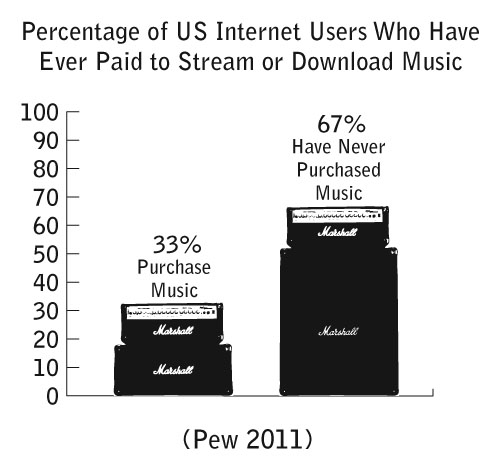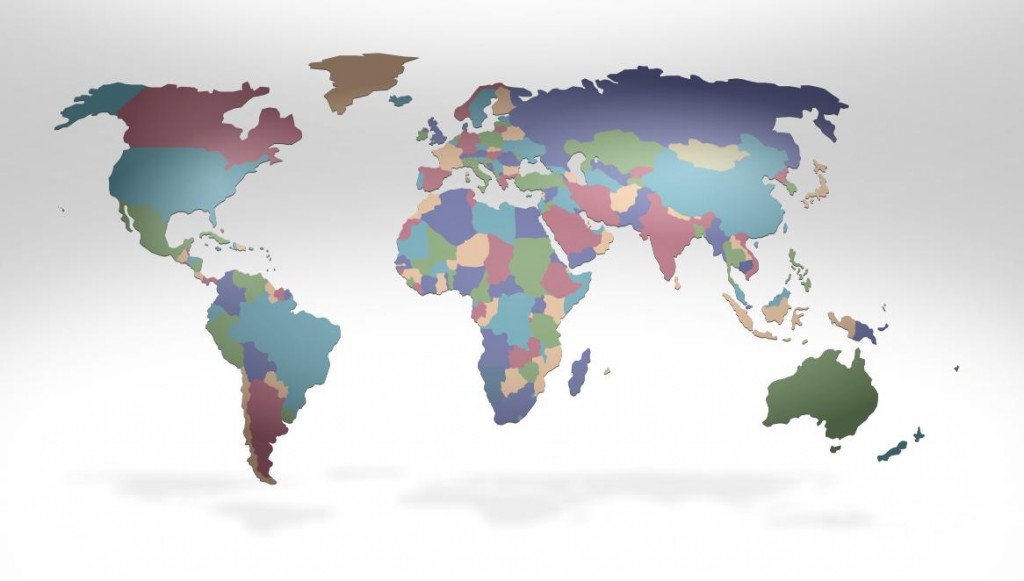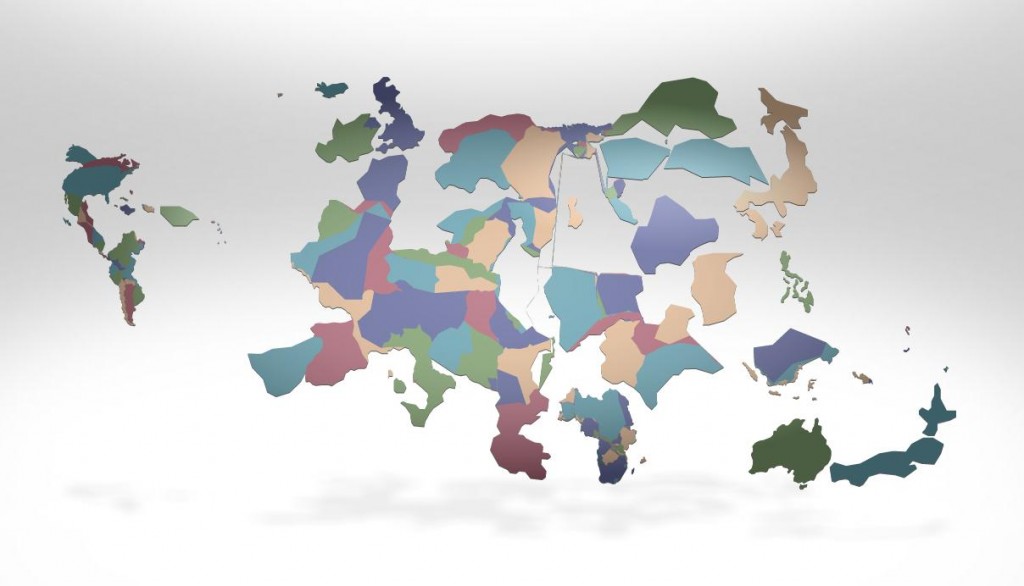 Cyborgology editors Nathan Jurgenson and PJ Rey discuss the social media connections to this tragedy. The complete interview is now streaming (interview starts at 2:03).
Cyborgology editors Nathan Jurgenson and PJ Rey discuss the social media connections to this tragedy. The complete interview is now streaming (interview starts at 2:03).
Search results for
 On Jan. 8, 2011, Jared Lee Loughner allegedly shot Congresswoman Gabrielle Giffords (D-AZ) and 19 others resulting in 6 fatalities. This event has drawn attention to a number of new and important roles social media has come to play in our society, including how information is gathered, changed political rhetoric, and how these sites handle the profiles of those involved in high-profile tragedies.
On Jan. 8, 2011, Jared Lee Loughner allegedly shot Congresswoman Gabrielle Giffords (D-AZ) and 19 others resulting in 6 fatalities. This event has drawn attention to a number of new and important roles social media has come to play in our society, including how information is gathered, changed political rhetoric, and how these sites handle the profiles of those involved in high-profile tragedies.
Profiling the Suspect
Media coverage (i.e., cable, network, radio, and newspapers) of the event represented a broader trend in contemporary journalism: almost immediately, news outlets began to piece together a profile of this previously unknown figure using almost exclusively Loughner’s social media profiles (i.e., Facebook, Myspace, Youtube and, most recently, online gaming discussion boards). Even though his MySpace and Facebook profiles were taken down by the site, screenshots of the sites are available, including one showing a photo of gun on a US History textbook as a profile picture.
The digital documentation of our lives via social media offers an easily-accessible, autobiographical source for journalists and anyone else who is interested. Yet, there is a risk in basing our impressions solely off of this information. Loughner’s image of himself is certainly not objective and may very well be inaccurate. News outlets, however, face pressure to “get the scoop” on the story, so they tended to report on Loughner based heavily on this information, as opposed to interviewing a range of people in his life to construct a more holistic perspective.
The Post-Shooting Political Debate
In the wake of the tragedy, a debate emerged over the intensity and tone of contemporary political rhetoric. The political right in general, and Sarah Palin in particular, more...

This computer isn’t connected to the internet. It takes up an entire room, and its made by IBM. This sounds like the kind of technology you would find in a 1980 edition of Compute! Magazine. Instead, Engadget has been following the story in the traditional 21st century manner of tech news coverage: live blogging with photos and under-10-minute video interviews. The new computer making news is Watson [official IBM website for the Watson project], a new 80 teraflop supercomputer meant to answer natural language questions. It was demoed last Thursday at IBM’s research facility in Armonk, NY. Watson is being tested in the most grueling tournament of fact retrieval know to humankind: it is competing in several games of Jeopardy! against reigning champions Ken Jennings and Brad Rutter.
IBM intends to commercialize the technology by selling it to large medical and data industries who need to provide lots of seemingly routine answers to questions from a wide array of topics. By developing a system that can understand the subtlety of human language -with all of its puns, idiomatic expressions, and contextual meaning- data becomes retrievable in a very human way. more...

Pew released some new data on music streaming and downloads. I compiled a new chart illustrating the findings. Only one-third of Internet users in America have purchased music through the Web. This leaves us with the question: Are the majority of Internet users pirating music or using advertisement-based services like Pandora, Last.fm, or Grooveshark? Share your thoughts in the comments section.
Founder Jimmy Wales celebrating Wikipedia’s 10th birthday. The site gets 400,000,000 per month.
Fed-Ex has created an interactive global data experience on their website to offer “customers intriguing and insightful information to help them stay ahead of their customers’ needs in a continually changing world” (quote is from here). Putting aside the business speak, some of the data and especially its presentation is indeed intriguing. For instance, here is the globe with countries sized, as usual, by geographic size.
Next, we can have the size of the countries displayed based on all sorts of things. Below they are sized by access to the mobile web:

Jon Rafman is a Canadian artist who provocatively uses Google Street View images. His project is titled “The Nine Eyes of Google Street View,” named after the Google vehicles that roam around the globe with a 9-eyed lens to create panoramics of nearly every inch of road in the free world. Naturally, many compelling stills can be found within the mountain of imagery.
The Google camera photographs by utility – shooting in all directions at a given interval. This is opposed to the artistic model of photography where a human edits the world into the frame with some creative intent. As Rafman states in an essay about the project,
Google Street Views present a universe observed by the detached gaze of an indifferent Being. Its cameras witness but do not act in history. For all Google cares, the world could be absent of moral dimension.
However, and more critically, we should note that Google is not so nuetral at all. They are seeking total surveillance in an effort to make money. And this is partly why these images are so compelling: the juxtoposition of the “neutral” corporate Google gaze and the raw, candid reality so voyeuristically depicted.
 The debate over the extent to which the design and infrastructure of the Web privileges certain demographic groups is not new, but, nevertheless, continues to be important. Perhaps, most attention has been given to the way traditional gender hierarchies are reproduced by the masculine infrastructure of the Web. Cyborgology editor Nathan Jurgenson, for example, has previously covered the Wikipedia’s bias toward masculine language. Saskia Sassen warns “it may be naïve to overestimate the emancipatory power of cyberspace in terms of its capacity to neutralize gender distinctions.”
The debate over the extent to which the design and infrastructure of the Web privileges certain demographic groups is not new, but, nevertheless, continues to be important. Perhaps, most attention has been given to the way traditional gender hierarchies are reproduced by the masculine infrastructure of the Web. Cyborgology editor Nathan Jurgenson, for example, has previously covered the Wikipedia’s bias toward masculine language. Saskia Sassen warns “it may be naïve to overestimate the emancipatory power of cyberspace in terms of its capacity to neutralize gender distinctions.”
In an NPR interview this week, Wikipedia founder Jimmy Wales addressed the masculine bias of Wikipedia:
“The average age [of Wikipedia users] is around 26,” Wales says. “We’re about 85 percent male, which is something we’d like to change in the future. We think that’s because of our tech-geek roots.”
While the organization’s acknowledgment that the gender disparity on Wikipedia is promising, Wales seems to address the need for making the site more inclusive to women only from a marketing perspective. Sociologically speaking, there is a far more important reason to attract women to Wikipedia. Feminist sociologists have long argued the the types of knowledges that men and women produce are fundamentally different (in no small part due to their distinct social experiences). As Wikipedia is increasingly accepted as the primary source of collected human wisdom, it is important to ask whose voices are being left out, and as such, what ways of thinking are absent in the conversation. For Wikipedia, design and accessibility are not merely questions of customer service, but, in fact, have profound epistemological implications.
 Wonderful new cover story from the New York Times Magazine about death on Facebook. Read it here.
Wonderful new cover story from the New York Times Magazine about death on Facebook. Read it here.
Yes, even a CGI-filled big-budget glowing Disney spectacle can provide opportunity for theorization. Of the recent Internet-themed blockbusters – namely, Avatar (2009); The Social Network (2010) – Tron: Legacy (2010) best captures the essence of this blog: that the digital and the physical are enmeshed together into an augmented reality.
This seems surprising given that the film is premised on the existence of a separate digital world. Indeed, the first Tron (1982) is all about a strict physical-digital dualism and the sequel plays on the same theme: physical person gets trapped in a digital world and attempts to escape. However, Tron: Legacy explores the overlapping of the physical and digital. The story goes that Flynn, the hero from the 1982 film, develops a digital world that does not have the imperfections of its physical counterpart. His grand vision was to gloriously move humanity online. Simultaneously, the beings in the digital world want to export their perfection out of the digital world and to colonize the offline world, removing all of its imperfections (i.e., us). Flynn comes to realize that enforced perfection (read: Nazism) is unwanted. Instead of a highly controlled and orderly universe, what has to be appreciated is what emerges out of chaos. And it is here that the film makes at least two theoretical statements that are well ahead of most movies and popular conceptions of the digital.
First is the tension between more...
 On Jan. 8, 2011, Jared Lee Loughner allegedly shot Congresswoman Gabrielle Giffords (D-AZ) and 19 others resulting in 6 fatalities. This event has drawn attention to a number of new and important roles social media has come to play in our society, including how information is gathered, changed political rhetoric, and how these sites handle the profiles of those involved in high-profile tragedies.
On Jan. 8, 2011, Jared Lee Loughner allegedly shot Congresswoman Gabrielle Giffords (D-AZ) and 19 others resulting in 6 fatalities. This event has drawn attention to a number of new and important roles social media has come to play in our society, including how information is gathered, changed political rhetoric, and how these sites handle the profiles of those involved in high-profile tragedies.
Profiling the Suspect
Media coverage (i.e., cable, network, radio, and newspapers) of the event represented a broader trend in contemporary journalism: almost immediately, news outlets began to piece together a profile of this previously unknown figure using almost exclusively Loughner’s social media profiles (i.e., Facebook, Myspace, Youtube and, most recently, online gaming discussion boards). Even though his MySpace and Facebook profiles were taken down by the site, screenshots of the sites are available, including one showing a photo of gun on a US History textbook as a profile picture.
The digital documentation of our lives via social media offers an easily-accessible, autobiographical source for journalists and anyone else who is interested. Yet, there is a risk in basing our impressions solely off of this information. Loughner’s image of himself is certainly not objective and may very well be inaccurate. News outlets, however, face pressure to “get the scoop” on the story, so they tended to report on Loughner based heavily on this information, as opposed to interviewing a range of people in his life to construct a more holistic perspective.
The Post-Shooting Political Debate
In the wake of the tragedy, a debate emerged over the intensity and tone of contemporary political rhetoric. The political right in general, and Sarah Palin in particular, more...

This computer isn’t connected to the internet. It takes up an entire room, and its made by IBM. This sounds like the kind of technology you would find in a 1980 edition of Compute! Magazine. Instead, Engadget has been following the story in the traditional 21st century manner of tech news coverage: live blogging with photos and under-10-minute video interviews. The new computer making news is Watson [official IBM website for the Watson project], a new 80 teraflop supercomputer meant to answer natural language questions. It was demoed last Thursday at IBM’s research facility in Armonk, NY. Watson is being tested in the most grueling tournament of fact retrieval know to humankind: it is competing in several games of Jeopardy! against reigning champions Ken Jennings and Brad Rutter.
IBM intends to commercialize the technology by selling it to large medical and data industries who need to provide lots of seemingly routine answers to questions from a wide array of topics. By developing a system that can understand the subtlety of human language -with all of its puns, idiomatic expressions, and contextual meaning- data becomes retrievable in a very human way. more...

Pew released some new data on music streaming and downloads. I compiled a new chart illustrating the findings. Only one-third of Internet users in America have purchased music through the Web. This leaves us with the question: Are the majority of Internet users pirating music or using advertisement-based services like Pandora, Last.fm, or Grooveshark? Share your thoughts in the comments section.
Founder Jimmy Wales celebrating Wikipedia’s 10th birthday. The site gets 400,000,000 per month.
Fed-Ex has created an interactive global data experience on their website to offer “customers intriguing and insightful information to help them stay ahead of their customers’ needs in a continually changing world” (quote is from here). Putting aside the business speak, some of the data and especially its presentation is indeed intriguing. For instance, here is the globe with countries sized, as usual, by geographic size.
Next, we can have the size of the countries displayed based on all sorts of things. Below they are sized by access to the mobile web:

Jon Rafman is a Canadian artist who provocatively uses Google Street View images. His project is titled “The Nine Eyes of Google Street View,” named after the Google vehicles that roam around the globe with a 9-eyed lens to create panoramics of nearly every inch of road in the free world. Naturally, many compelling stills can be found within the mountain of imagery.
The Google camera photographs by utility – shooting in all directions at a given interval. This is opposed to the artistic model of photography where a human edits the world into the frame with some creative intent. As Rafman states in an essay about the project,
Google Street Views present a universe observed by the detached gaze of an indifferent Being. Its cameras witness but do not act in history. For all Google cares, the world could be absent of moral dimension.
However, and more critically, we should note that Google is not so nuetral at all. They are seeking total surveillance in an effort to make money. And this is partly why these images are so compelling: the juxtoposition of the “neutral” corporate Google gaze and the raw, candid reality so voyeuristically depicted.
 The debate over the extent to which the design and infrastructure of the Web privileges certain demographic groups is not new, but, nevertheless, continues to be important. Perhaps, most attention has been given to the way traditional gender hierarchies are reproduced by the masculine infrastructure of the Web. Cyborgology editor Nathan Jurgenson, for example, has previously covered the Wikipedia’s bias toward masculine language. Saskia Sassen warns “it may be naïve to overestimate the emancipatory power of cyberspace in terms of its capacity to neutralize gender distinctions.”
The debate over the extent to which the design and infrastructure of the Web privileges certain demographic groups is not new, but, nevertheless, continues to be important. Perhaps, most attention has been given to the way traditional gender hierarchies are reproduced by the masculine infrastructure of the Web. Cyborgology editor Nathan Jurgenson, for example, has previously covered the Wikipedia’s bias toward masculine language. Saskia Sassen warns “it may be naïve to overestimate the emancipatory power of cyberspace in terms of its capacity to neutralize gender distinctions.”
In an NPR interview this week, Wikipedia founder Jimmy Wales addressed the masculine bias of Wikipedia:
“The average age [of Wikipedia users] is around 26,” Wales says. “We’re about 85 percent male, which is something we’d like to change in the future. We think that’s because of our tech-geek roots.”
While the organization’s acknowledgment that the gender disparity on Wikipedia is promising, Wales seems to address the need for making the site more inclusive to women only from a marketing perspective. Sociologically speaking, there is a far more important reason to attract women to Wikipedia. Feminist sociologists have long argued the the types of knowledges that men and women produce are fundamentally different (in no small part due to their distinct social experiences). As Wikipedia is increasingly accepted as the primary source of collected human wisdom, it is important to ask whose voices are being left out, and as such, what ways of thinking are absent in the conversation. For Wikipedia, design and accessibility are not merely questions of customer service, but, in fact, have profound epistemological implications.
 Wonderful new cover story from the New York Times Magazine about death on Facebook. Read it here.
Wonderful new cover story from the New York Times Magazine about death on Facebook. Read it here.
Yes, even a CGI-filled big-budget glowing Disney spectacle can provide opportunity for theorization. Of the recent Internet-themed blockbusters – namely, Avatar (2009); The Social Network (2010) – Tron: Legacy (2010) best captures the essence of this blog: that the digital and the physical are enmeshed together into an augmented reality.
This seems surprising given that the film is premised on the existence of a separate digital world. Indeed, the first Tron (1982) is all about a strict physical-digital dualism and the sequel plays on the same theme: physical person gets trapped in a digital world and attempts to escape. However, Tron: Legacy explores the overlapping of the physical and digital. The story goes that Flynn, the hero from the 1982 film, develops a digital world that does not have the imperfections of its physical counterpart. His grand vision was to gloriously move humanity online. Simultaneously, the beings in the digital world want to export their perfection out of the digital world and to colonize the offline world, removing all of its imperfections (i.e., us). Flynn comes to realize that enforced perfection (read: Nazism) is unwanted. Instead of a highly controlled and orderly universe, what has to be appreciated is what emerges out of chaos. And it is here that the film makes at least two theoretical statements that are well ahead of most movies and popular conceptions of the digital.
First is the tension between more...



